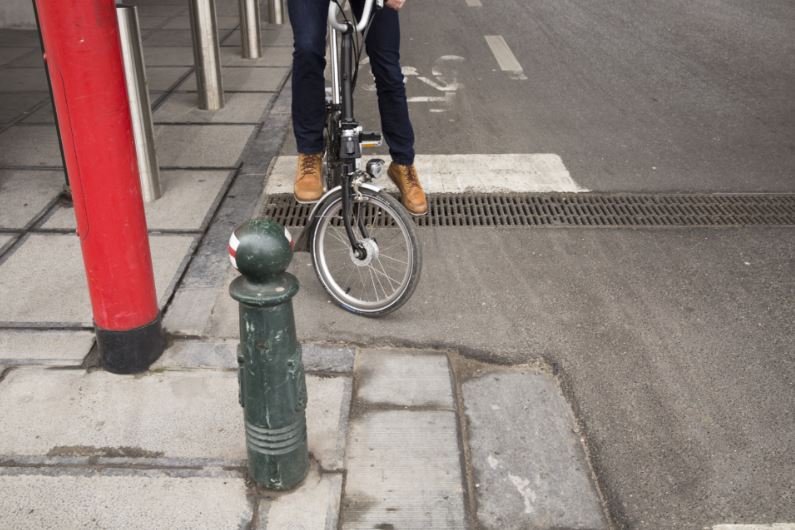Over 80% of cycling accidents on Belgian and Dutch roads do not involve a motorised vehicle, according to a study of hospital admissions.
Most hospitalisations are due to what the study calls "one-sided" accidents, such as falls without other people involved, or collisions with an obstacle.
This means that it is not cars, but holes in the road and bollards that most often lead to cycling accidents, according to the study, conducted by the Vrije Universiteit Brussel (VUB) and UGent in collaboration with the Dutch Utrecht University and Foundation for Scientific Research on Traffic Safety.
“Bollards are very dangerous,” said Professor Bas de Geus, who carried out the research for the VUB. “They are often placed in the middle of the cycling lane to stop cars. But a collision with them at 15 or 20 km/hour often has serious consequences," he added, comparing it to colliding head-on against a wall.
However, many cyclists are hardly aware of this, a survey of about 2,000 Belgian and Dutch people over 40 years old showed. 60% of respondents indicated that they think cycling accidents involving a car lead to hospitalisations for severe injuries. Among Brussels respondents, this figure even rose to 71%.
Related News
- Antwerp to roll out 19 km of bicycle streets this summer
- Cities should 'act fast' to make lockdown biking boom permanent
- Brussels rolls out 40km of cycle paths to ready lockdown phase-out
However, an analysis of hospital admissions shows that most cyclists (83%) are admitted after an accident in which no motorised vehicle is involved.
Cyclists adapt their driving style to the potential dangers they expect in their surroundings, according to De Geus, meaning they are prone to cycling more recklessly when there are no cars around.
However, this poses a different problem, as the quality of 40% of cycling lanes is "insufficient," according to the latest report by the Flemish Agency for Roads and Traffic. Unevenness, holes, and bollards in particular are problematic, the report states.
"To make cycling safer, infrastructure is absolutely crucial," said De Geus. "Think for instance of a sufficiently wide cycling path with a flat pavement, without obstacles such as bollards and straight kerbstones that cyclists can fall over," he added.
Maïthé Chini
The Brussels Times

